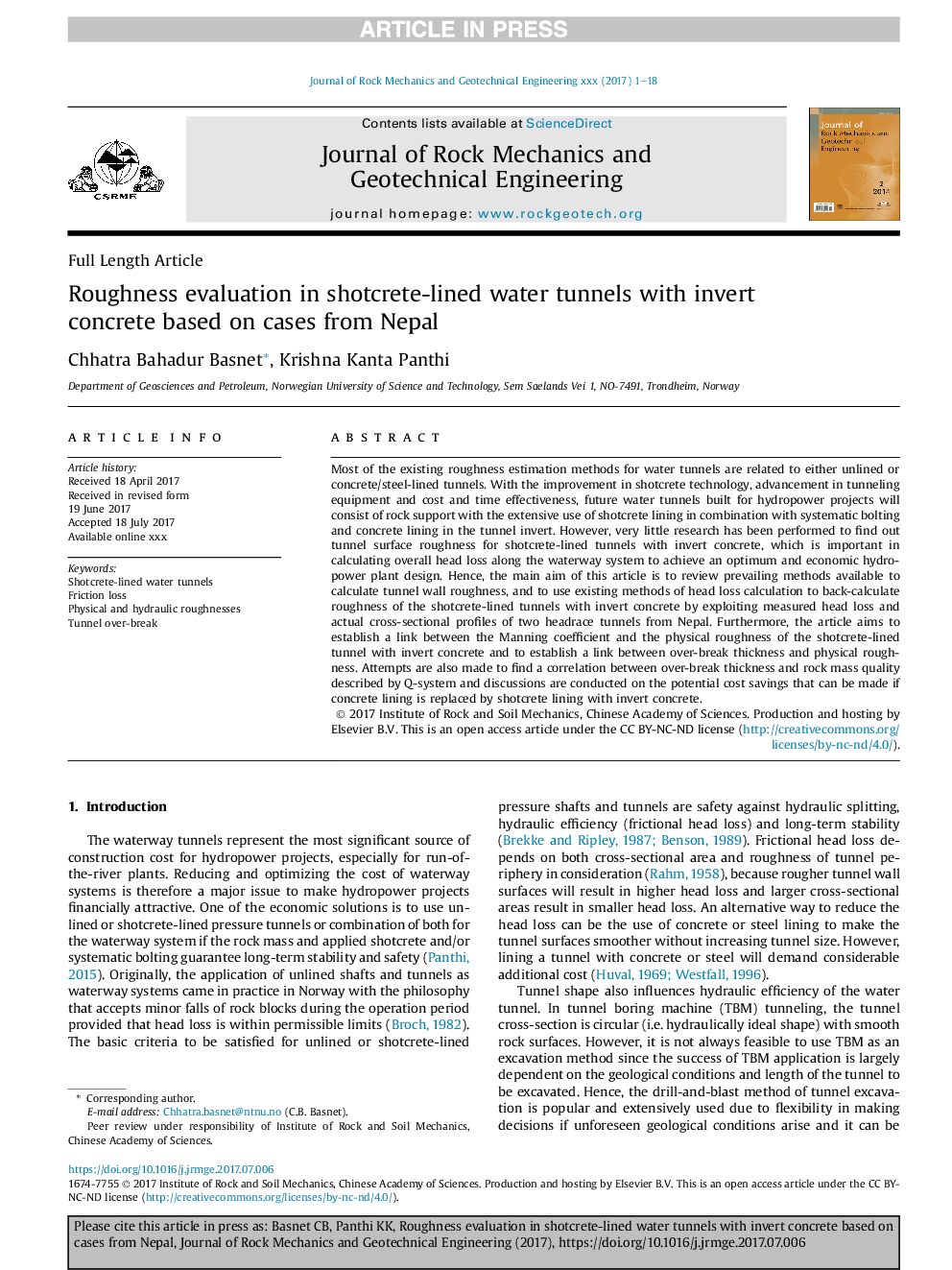| Article ID | Journal | Published Year | Pages | File Type |
|---|---|---|---|---|
| 6752363 | Journal of Rock Mechanics and Geotechnical Engineering | 2018 | 18 Pages |
Abstract
Most of the existing roughness estimation methods for water tunnels are related to either unlined or concrete/steel-lined tunnels. With the improvement in shotcrete technology, advancement in tunneling equipment and cost and time effectiveness, future water tunnels built for hydropower projects will consist of rock support with the extensive use of shotcrete lining in combination with systematic bolting and concrete lining in the tunnel invert. However, very little research has been performed to find out tunnel surface roughness for shotcrete-lined tunnels with invert concrete, which is important in calculating overall head loss along the waterway system to achieve an optimum and economic hydropower plant design. Hence, the main aim of this article is to review prevailing methods available to calculate tunnel wall roughness, and to use existing methods of head loss calculation to back-calculate roughness of the shotcrete-lined tunnels with invert concrete by exploiting measured head loss and actual cross-sectional profiles of two headrace tunnels from Nepal. Furthermore, the article aims to establish a link between the Manning coefficient and the physical roughness of the shotcrete-lined tunnel with invert concrete and to establish a link between over-break thickness and physical roughness. Attempts are also made to find a correlation between over-break thickness and rock mass quality described by Q-system and discussions are conducted on the potential cost savings that can be made if concrete lining is replaced by shotcrete lining with invert concrete.
Keywords
Related Topics
Physical Sciences and Engineering
Earth and Planetary Sciences
Geotechnical Engineering and Engineering Geology
Authors
Chhatra Bahadur Basnet, Krishna Kanta Panthi,
